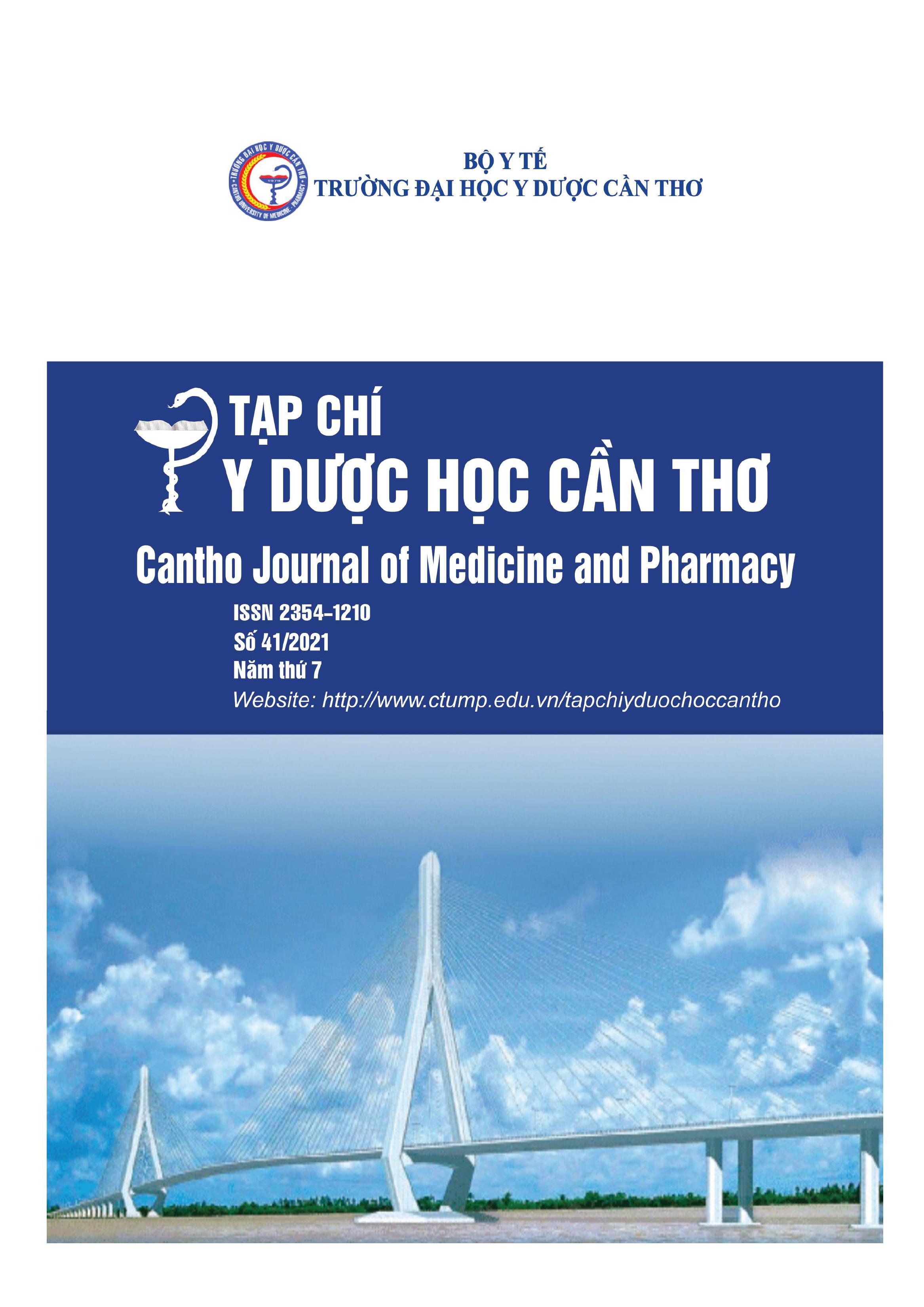THE PREVALENCE OF ALLERGENS DETECTED BY IMMUNOBLOTTING ASSAY AND SOME RELATED FACTORS AMONG ALLERGY PATIENTS AT CAN THO HOSPITAL OF DERMATO – VENEREOLOGY IN 2020
Main Article Content
Abstract
Background: In Viet Nam, the number of people suffering from allergies diseases has increased rapidly in recent years. Identifying the causes of allergies is an integral part of the diagnosis and treatment of the disease. Objectives: This study aimed to determine the prevalence of allergens test results and some factors related to the positive allergen test result and some common characteristics by immunoblotting assay among allergy patients. Materials and methods: A crosssectional descriptive study was conducted among 369 patients with allergic diseases at Can Tho hospital of Dermato – Venereology from June 2020 to December 2020. Test for specific serum IgE allergens by immunoblotting assay technique with CLA1 test kit (Hitachi, USA). Results: The prevalence for at least 1 allergen was 69.4%. The most common allergens are: Dermatophagoides Farinae (54.3%), Dermatophagoides Pteronyssinus (47.3%), Blomia Tropicalis (43.8%). The group of patients < 12 years old, Kinh ethnic and the group of Student/Retirement/Housewife had a higher prevalence result than other groups (p<0.05). Conclusion: The most common allergens: Dermatophagoides Farinae, Dermatophagoides Pteronyssinus and Blomia Tropicalis. There is a statistically significant relationship between age group, ethnicity, occupation and positive result.
Article Details
Keywords
Immunoblotting assay, allergen, allergy
References
2. Đào Thị Hồng Diên, Lê Thị Minh Hương (2013), Nghiên cứu kết quả test lẩy da với các dị nguyên hô hấp trong nhà của bệnh nhi hen phế quản. Tạp chí Y học thực hành, (860), tr.52-55.
3. Phạm Thu Hiền, Lê Thị Minh Hương (2018), Nghiên cứu tần suất và một số yếu tố liên quan đến viêm da cơ địa ở trẻ em 24 - 60 tháng tuổi tại thành phố Yên Bái, tỉnh Yên Bái. Tạp chí Y học dự phòng, 28(8), tr.50-56.
4. Phạm Đình Lâm (2017), Kháng thể IgE đặc hiệu và xét nghiệm lẩy da trên bệnh nhân mày đay, Tạp chí Y học TP. Hồ Chí Minh, 22 (1), tr.36-43.
5. Trần Viết Luân (2019), Đặc điểm lâm sàng và nồng độ IgE đặc hiệu trong huyết thanh ở bệnh nhân viêm mũi dị ứng. Tạp chí Y học TP. Hồ Chí Minh, 23 (3), tr.38-43.
6. Phan Cẩm Ly (2018), Nghiên cứu phát hiện một số dị nguyên ở bệnh nhân viêm da dị ứng bằng test lẩy da. Tạp chí Y học cộng đồng, 6 (53), tr.27-33.
7. Lê Thị Lan Thủy (2019), Mối liên quan giữa tình trạng quá mẫn với dị nguyên hô hấp và hen phế quản. Tạp chí Nghiên cứu Y học, 121 (5), tr.72-80.
8. Võ Lê Vi Vi (2018), Kết quả test lẩy da với các dị nguyên hô hấp trong nhà ở trẻ mắc bệnh hen. Tạp chí Y học thành phố Hồ Chí Minh, 22 (4), tr.125-129.
9. Trương Tiểu Vi (2018), Nồng độ IgE huyết thanh toàn phần và đặc hiệu trên bệnh nhân viêm da cơ địa tại bệnh viện Da liễu thành phố Hồ Chí Minh. Tạp chí Y học TP. Hồ Chí Minh, 22 (1), tr.58-65.
10. Hitachi Chemical Diagnostics Inc (2013), Hitachi Opttigen Specific IgE assay: An in-vitro diagnostic allergy system, USA.
11. Hon K.L., Wang S.S., Wong W.L. (2012), Skin prick testing in atopic eczema: atopic to What and at what age. World J Pediatr, 8 (2), pp.164-8.
12. Kokandi A. (2014), Pattern of aeroallergen sensitization in atopic dermatitis patients at university clinic in Jeddah – Saudi. Journal of Advances in Medicine and Medical Research, 4 (2), pp.747-754.


